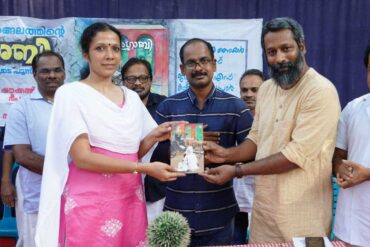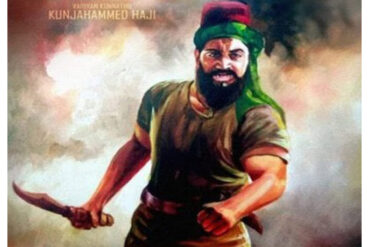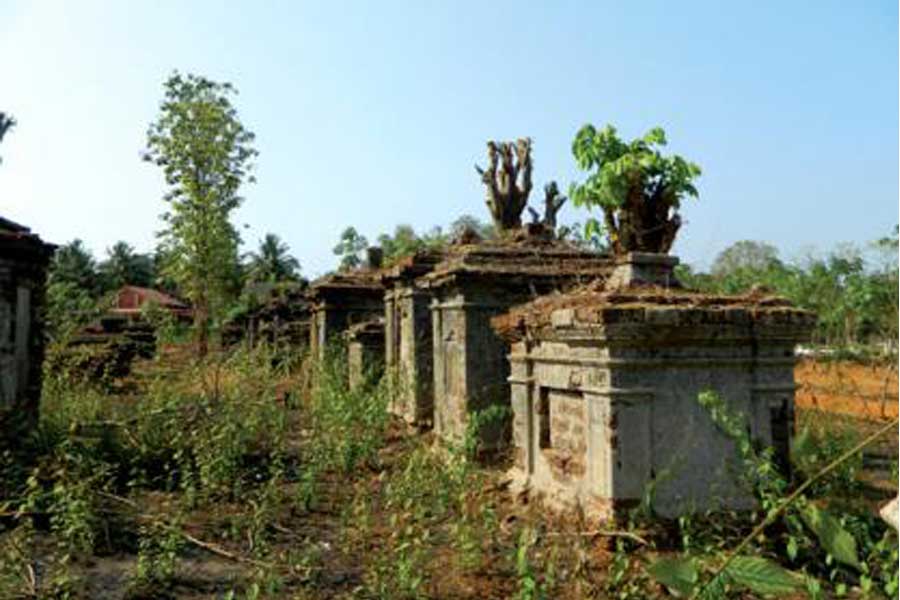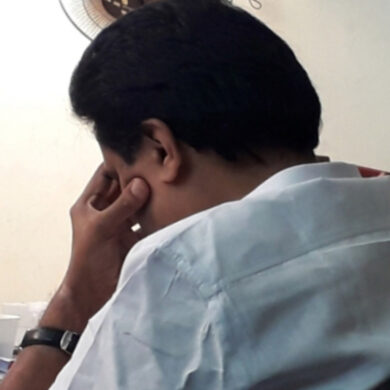Almost a decade ago, while researching on European burials in Malabar coast for a book I was writing, I came across a surprising entry in the death and burials register kept at the old garrison church in Kannur: Egbert Alexander Granville James, died and buried on 19th August 1887, son of Prince Moung Lat, Burmese state prisoner. The brief entry in the burial register at St. John’s Church said the boy died on the sixth day of his birth and the cause of death was ‘tetanus’.
The British East India Company that had come to possess the entire Malabar region from late 18th century had established the garrison at Cannanore as early as 1810, in order to protect the large areas seized from Tipu Sultan and their vast trade interests. The garrison had seen hectic military activity over the years as it had to deal with a highly volatile region that experienced a number of revolts including the Pazhassi rebellion of 1790s to the Moplah revolt in 1921. The barracks were home to almost all the major regiments of the British Army, from the HM 74th Highlanders to the Royal Fusiliers. The English had established the church and a cemetery nearby and among the tombs of traders and soldiers from various European nationalities was this singular grave of a Myanmar prince.
The mention of a Burmese prince as state prisoner in the garrison town’s church records was surprising: the British authorities had always maintained that the only state prisoner from the Burmese royal family, after the conquest of Burma in the third Anglo-Burma war in 1885, was King Thibaw, who was followed by his consort Queen Supayalat (who was also his half-sibling) and their daughters who were lodged in a hill-top house called Outram at Ratnagiri, a coastal town in the Konkan region of Maharashtra. After spending more than 30 years in penury and isolation at Ratnagiri, the King died in 1916 as a captive and the Queen and her three daughters were allowed to return home afterwards, leaving behind one of her daughters who had married a commoner in India. The eldest Princess later returned to Ratnagiri to be with her husband Gopal Sawant, who was formerly employed as the family’s driver.
With the death of King Thibaw, the royal lineage of Burma practically came to an end, as Queen Supayalat had seen to the murder of as many as 80 members of the royal family on the ascension of Thibaw to the throne. She did not want anyone to challenge her husband or her own children’s claims to the throne, and hence the slaughter of the extended royal household. She is reported to have taken special care not to spill royal blood and so, her victims were covered in carpets and whacked to death and their bodies thrown into rivers.
It took me a long time to find out who this prince was and how he had happened to end up in the distant garrison town in the west coast of India. Finally the story emerged from a small book named The Lord of The Celestial Elephant, written by Elaine Halton and published in London in 1999. The author was a descendant of the prince whose parents had migrated to Great Britain after the World War. It is from this book as well as from researches in various libraries and archives that this story of a wonderful man whose life is buried in the footnotes of colonial history is pieced together.
Prince Moung Lat was lucky to escape the royal murders at King Thibaw’s palace after his accession of the throne. He escaped, because by the time of the death of King Mindon Mein in October 1878 and his son Thibaw being crowned, he was already a prisoner in Cannanore, having been arrested for rebellion against the British forces in Burma in a bid to free his native land from foreign occupation. The Prince had, in 1872, gathered an army and was leading a guerrilla war against the British when he was arrested by Major Lloyd in 1873 and transported to solitary confinement in Aden. Two years later, he was relocated to Cannanore in a secret move at the time of the great upheavals in Burma and it was there that he was to begin serving his indefinite term as a state prisoner.
Prince Moung Lat and King Thibaw were cousins and both had an equal claim to the throne. Moung Lat was born in 1852, son of Hliene Mein, King of Burma, who had succeeded King Tharawaddy of the Konbaung dynasty. One year after his birth, his father King Hleine Mein was assassinated by his younger brother, Mindon, who usurped the throne in 1853.
King Mindon Mein had a long reign, and he is considered the wisest among Burma’s rulers although he was known to be mentally unstable because of various debilities due to generations of inbreeding in the royal family. Prince Moung Lat was expected to succeed Mindon, as the Burmese dynasties did not follow strict primogeniture in succession and the fact that Mindon had a low opinion of his son Thibaw. ”If Thibaw ever came to the throne,“he once remarked, “then Burma will pass into the hands of foreigners.”
There are two versions about the childhood of Prince Moung Lat, the son of the slain King. According to one version, King Mindon allowed the child to live in the palace. Some speculated that he was to be murdered in due course of time and others said Mindon, in guilt, would appoint him his heir.
Another version is that his mother, Me Eepu Kempoo of Hanthawadi, after the assassination of her husband the king, had smuggled the child out of the palace, and secretly brought him up at Pangoon-Yah, a remote part of the country near Thayetmyo, a British post on the River Irawaddy in lower Burma. But at some point, the young prince had returned to the palace. When his mother died in 1860, the prince was eight years old and was living in the royal palace at Mandalay receiving private education.
Those were tumultuous days for the country and the royal family. There were troubles in all parts of the country and lower Burma was virtually under British rule, administering their occupation from Rangoon. When a group of princes rebelled in 1866, the British were rumoured to have had a hand behind it, with a view to toppling King Mindon and installing someone more to their interests. But it is argued, the King himself might have had inadvertently encouraged rebellion, in his oft-repeated belief that “might is right.”
In the aftermath of the failed rebellion, many princes had to flee Mandalay and Prince Moung Lat received the protection of Colonel Sladen, the British spokesman and political agent in the court of Mandalay, who helped him go into hiding in the Shan hills for three years in the guise of a Buddhist monk. While fleeing, the only possession he took along was his jewel-studded sword, a magnificent weapon, which he had to hide as he spent his days in the guise of a monk in the forests.
Colonel Sladen was an important figure among the British officials in the Burmese court having a long career in the country. He spoke the Burmese language and had excellent contacts in the royal court and he enjoyed the trust of the King. He was among the very few English officers who were honoured with the Tsalve, a decoration of great merit in the court. In 1869, the honour was conferred on Edward B Sladen for special personal services performed in the interests of the King, as political agent at the court during 1864-1869.
While a fugitive in the Shan hills, the prince came to the conclusion that the British instigated the 1866 rebellion intending to appoint a puppet to the throne after removing Mindon and annexing what remained of Burma kingdom. He was convinced about the need to drive the British out of the country and hence gathered an army and launched his guerrilla warfare against the foreign forces in lower Burma, based in the jungles in the Toungoo region under British control.
There is not much information on the encounters of the Prince’s guerrilla army with the British forces, but the young Prince appears to have had a love affair with a young girl he met during his wanderings in the forests. In her short biography of her grandfather, Elaine Halton refers to his secret love for a Burmese village girl he met in the jungles. He wanted to marry her, but only after securing his kingdom. But in the meanwhile her parents decided to get her married to someone else and the Prince, with regrets, wished her well. He even waylaid a cart-man who was travelling through the jungle path with a load of furniture and got two of the best pieces unloaded and sent them to her as a wedding gift.
This phase of his life as a fugitive and warrior came to an end when he was tracked down and arrested by Major Lloyd in 1873. He was soon transported to Aden, a port on the mouth of Persian Gulf in the Arabian Sea, but he refused to live there and even threatened to commit suicide if he were forced to continue to live in the arid deserts of south Yemen: ”No decent bird would tolerate to live in Aden,” he told his captors.
The authorities then decided to move the Prince to Cannanore, the garrison town in south India on the Arabian Sea coast. He arrived in a steamer via Mangalore, and on board he had met two Roman Catholic priests with whom he discussed theology, as he was keen to know how Christianity differed from his own Buddhism.
The Prince was only twenty-three when he arrived in Cannanore in 1875. On his arrival at the port, he was received by senior officials of the garrison, including Brigadier Cadell, General Kempster, Major Conningham, and the cantonment’s magistrate, Captain Ketcham. Captain R W Sheffield was the officer in charge of his affairs in the cantonment.
It was light custody for the prince at Cannanore, that he was required only to report his presence in the cantonment every evening before retirement. He had been assigned a house with a garden, and his gates were guarded by 9th and 25th Madras Native Infantry. He spent his time gardening, and his garden was famous throughout the entire cantonment for its variety of flowers and vegetables. In the mornings and evenings, he took long walks on the beach or in the lush green hinterland. He also had a tutor, who gave him English classes every day.
Across the road from his bungalow lived an Australian widow and her two daughters. Henrietta was the widow of Thomas William Godfrey, a merchant who once controlled trade between Australia and India. He had died at sea over a decade ago, when the elder daughter Eveline was just four. The Godfreys had four children and two of them — a boy and a girl—had died in infancy, while they were living at Black Town in Madras.
The prince fell in love with Eveline, the elder girl, who was around sixteen, and made several attempts to talk to her at the beach where they went occasionally for their exercises. But the girl made it clear that she could talk to him only if her mother permitted her and for that he would have to meet her.
Mrs Godfrey was a person who led a very retired life, and she entertained few visitors. Though most of her family was in Australia, she had been in Cannanore for a long time, bringing up her children almost all alone after the death of her husband, supporting herself with private tuition for the children in the cantonment. She was unusual in this, as women were not normally given to independent careers in the English society in that era. She had many children under her care, and with a government grant, she opened the Montessori School in the town, considered the first Church of England school in western India.
The Prince expressed his wish to marry her daughter, and the lady had no serious objections but she raised two major points: She could not allow the marriage without the permission of the Government of India as he was a state prisoner; and secondly, there was a problem of religion as he was a Buddhist and they were Protestant Christians. The Prince agreed to get permission from the authorities and also to convert himself to the Protestant Christian faith to solemnize the marriage according to the customs of that church.
It would be interesting to speculate what made the lady accept a declared enemy of the state—a state prisoner—who was described as a “savage given to very violent temper” as her son-in-law. Evidently, they got on very well from their first meeting and when Captain Sheffield described him as a savage she laughed and said, “He does not look one!” Captain Sheffield also told her about his past activities as a rebel leader in Burma, asserting that had the British not captured him at the time there would have been a terrible outbreak in the country, as almost the whole of lower Burma was in his hands.
The Government of India, through some semi-official channels, had informed King Mindon in Mandalay about the intentions of his nephew the prince, and having received his consent, instructed Bishop Frederick Gell in Madras to take steps for his formal acceptance into the Anglican Church. He, in turn, asked Rev John Smithwhite, chaplain at St John’s Church, Cannanore, to give the prince instructions in Bible, so that he could be ready to receive the sacraments. The ‘first communion’ took place in the church on 31st March 1878 with Rev. Smithwhite performing the service in the presence of witnesses—R W Sheffield and Patrick Fennel, both officers in the rank of captain in the cantonment. The prince took a new name, John William Moung Lat, a name selected by Eveline.
The wedding took place on 29th April 1878, at the same church, a glittering function for the small town. There was full military regalia, the entire town was in attendance and it was declared a holiday for the cantonment. The prince had but one regret–that he was not allowed to wear the traditional Burmese royal dress and instead had to do with the western style suit and trousers.

The couple spent ten years in Cannanore at their bungalow raising turkeys and looking after their garden and vegetables. They had three children there: Eunice Augusta born on 7th February 1882, Rupert Alexander George, born on 2nd May 1886 and Egbert Alexander Granville, born on 13th August 1887. Egbert, born on the unlucky date, died six days later and was buried at St John’s cemetery the same day.
Soon after the death of the child, the Prince had a severe attack of asthma and following medical advice, the authorities decided to move him to Bangalore, a town with a more agreeable climate. They spent the next 18 years there and had five more children during this residency.
In 1906, he was again relocated to Madras for health reasons. His health continued to deteriorate and he was, once again, moved to Bellary, in the ‘Ceded Districts’. By this time the Prince had spent many decades in captivity, he was in poor health and there were reports in newspapers about the Government considering his release: He was no longer perceived a threat, an old man weighed down with the burdens of a large family and poor health with no income except the meager allowance given by the Government.
A Prince without a country or an income, his financial condition had become very precarious. He had a large family to support and many children to educate. While in Madras, he petitioned the Government for an increase in his allowance. The request was promptly turned down. Furious about the ill-treatment of the prince by the government, whose forces took away his country and plundered its treasury, Eveline wrote directly to Queen Alexandra about their plight. The queen sent her money from her personal resources for the children’s education.
The Prince’s financial troubles had been mounting ever since he was in Bangalore and on one occasion he had even to approach a civil court for some respite from creditors. A news item appeared in the New Zealand newspaper, Nelson Evening Mail, in 1892, in its section ‘Interesting Gleanings’, says: “Not all the petty princes in India are rolling in wealth, for a certain Prince Moung Lat recently applied to the civil judge at Bangalore for permission to pay into court five rupees per mensem towards a judgement debt of 280 rupees.” The prince explained that his government allowance was not sufficient to enable him to maintain his wife and family, much less to meet his liabilities. This plea had no effect, for he was advised to reduce his expenditure and pay his debt in full.
The cruel irony of his troubles with a meager allowance that did not allow him even subsistence and the strictures from the civil judge about his alleged profligacy became evident when Colonel Lloyd Jr, son of the officer who had captured him many decades ago, paid a visit in 1927, when the prince was already 75 years of age. When the visit was announced, it was expected to be an occasion for a late apology on the part of the government, but what the young officer had told him was that the government never paid his—the officer’s—father the bounty for the arrest of the rebel he was due!
Towards the end of 1927 came the news that Government of India has decided to release the Prince; by then he had spent 54 years in India as a state prisoner. He arrived in Rangoon on 28th January 1928 with his family, to a country he had left five-and-a-half decades ago as a twenty-one-year-old young man, and settled down to a new life at Lynne, in Insein, until his death eight years later, on 20th January 1936. He was buried at the Kemendine Cemetery, a Protestant Christian cemetery at Insein.
Soon the war clouds engulfed the whole of Europe and Asia. As the Japanese invaded Burma, the family had to leave Rangoon and flee to India once again as refugees. During war time, they were in Madras where they had family and relatives. It was here that Eveline Moung Lat, the life- long companion and partner of the prince, breathed her last on 8th January 1945. She was buried at the St Thomas Mount Cemetery, Madras. Fifty-five years ago, her mother was also buried in the same city. The children took up jobs in the government and the armed forces and soon became integrated into the world of commoners, spreading themselves into various parts of the world.
The Prince, as a young man, took up arms to fight the British who had come to conquer his country, and he gave 54 years of his life in his urge for freedom. It appears no one back home had any inkling about his solitary life in India. I made several attempts to locate his son’s grave in the cemetery at Kannur, but failed. Most likely the boy was buried in an unmarked grave as the poor Prince could not have managed to provide for a decent headstone for his son.
Cover image: A view of the cemetery at St. John’s Church, Kannur







